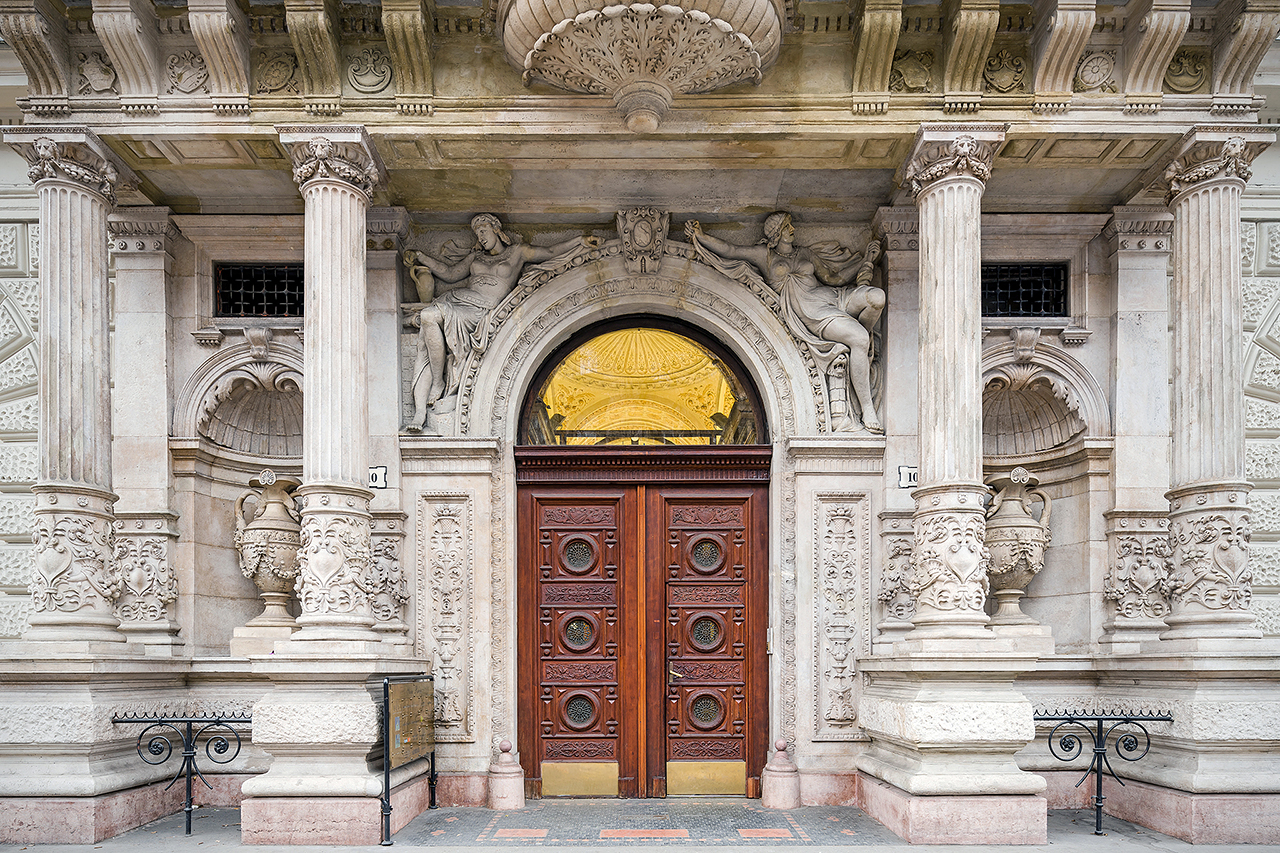Andrássy út 10
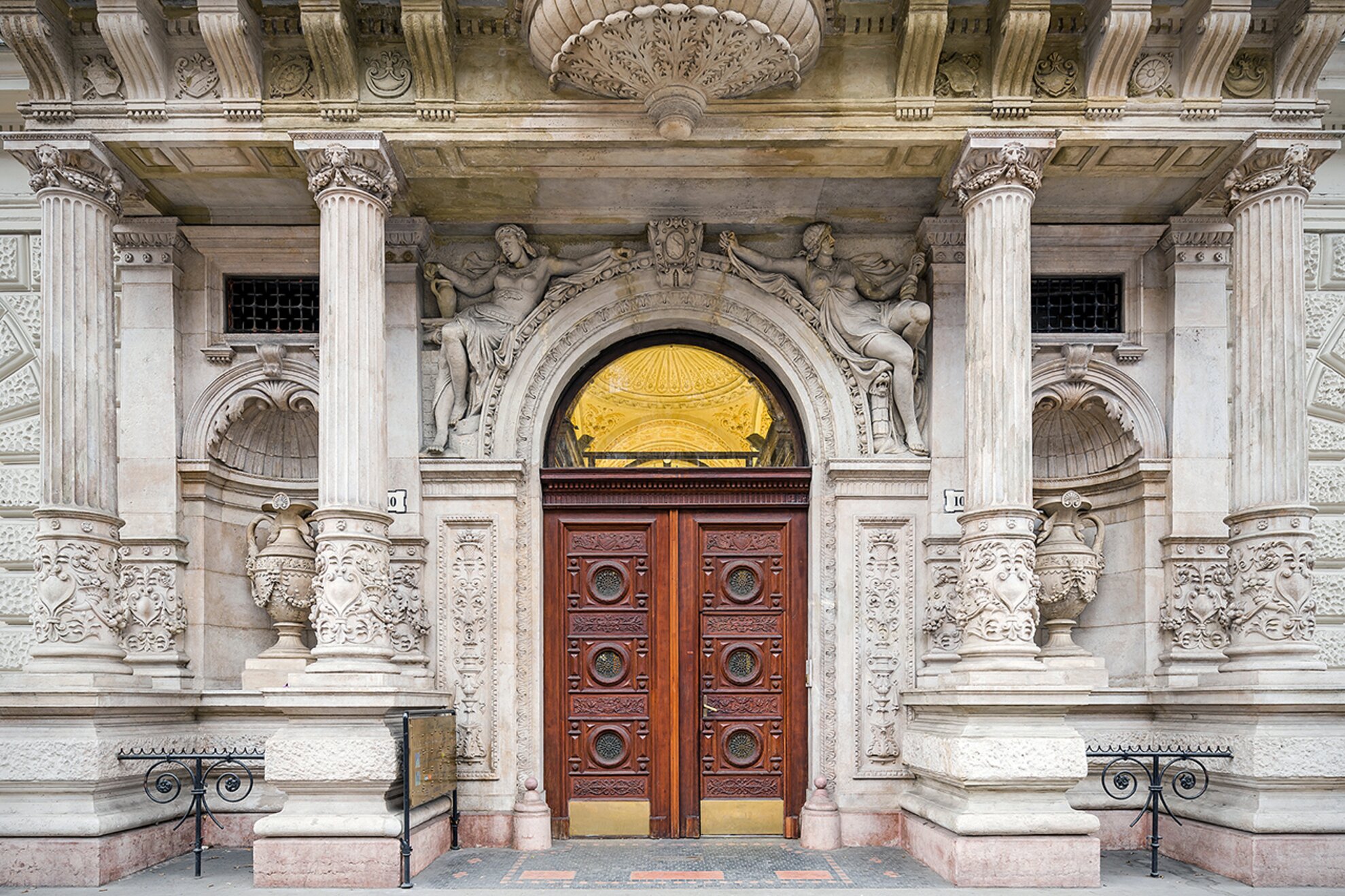
Intricate stucco decorates the façade of the eclectic Stern Palace, built in 1884 to serve as a residential building and the seat of the former Singer and Wolfner publishing house. Dominated by a carefully carved doorway, the edifice today houses offices.
Honvéd utca 3/Bedő House
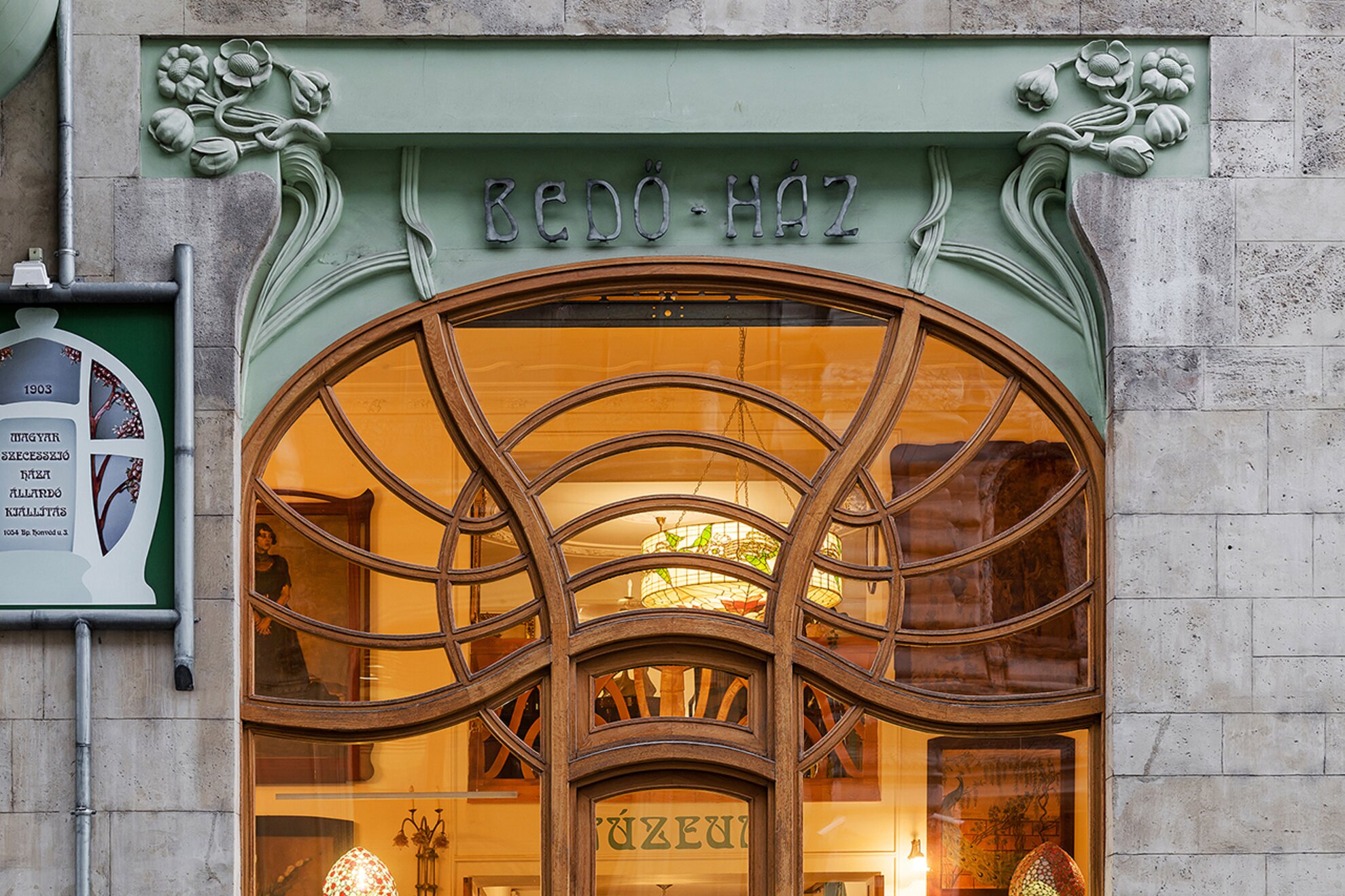
Influenced by French and Belgian Art Nouveau, this pistachio-green building was named after the man who commissioned it, Béla Bedő, a rich factory and mine owner. Behind its curved portal is the residence of his heirs, a museum dedicated to Hungarian Art Nouveau, the Art+Text Gallery and a café.
Budapest University of Technology
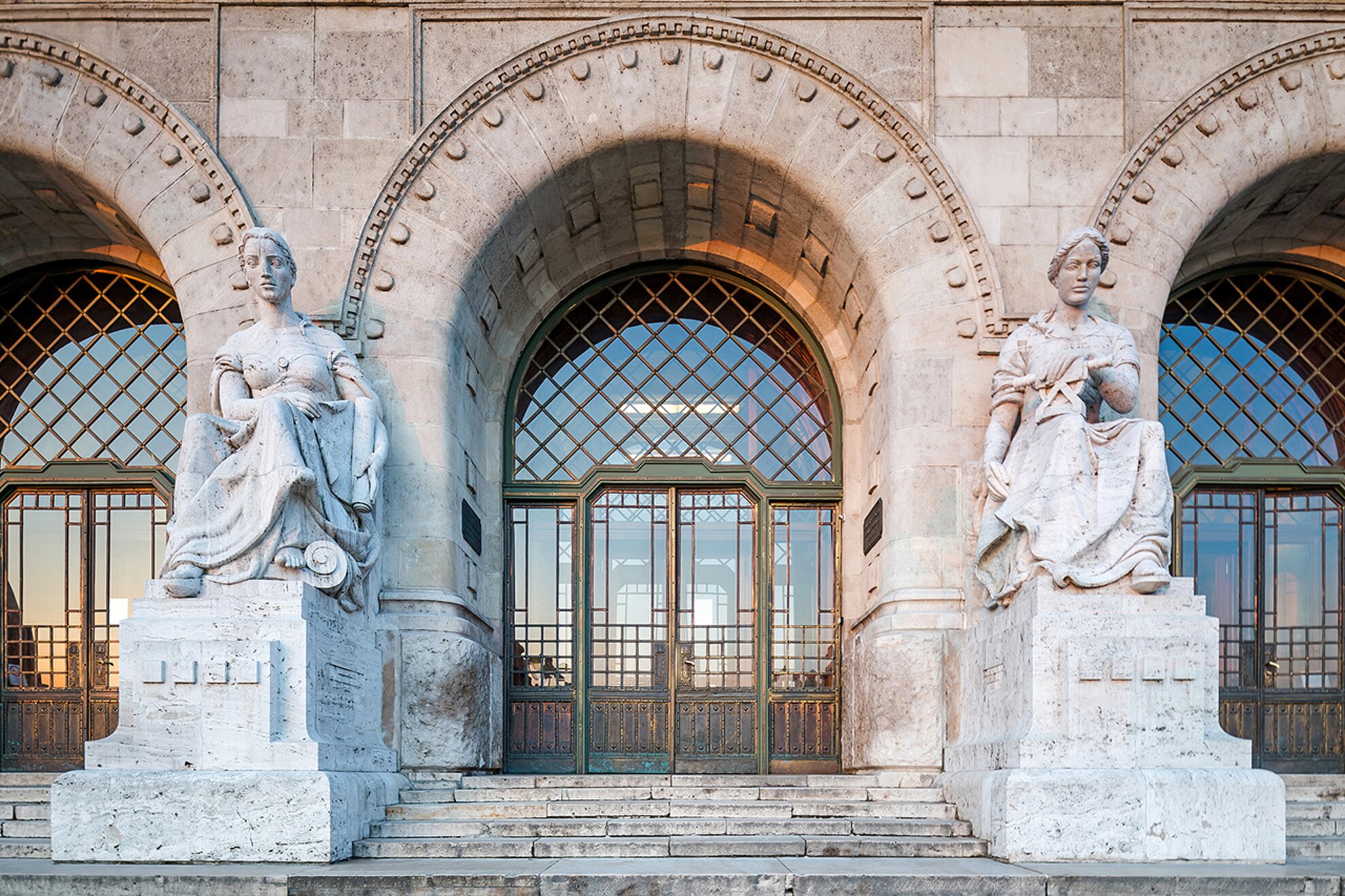
One of Budapest's oldest universities, this massive riverfront institution enhances the Buda landscape with its eclectic architecture, designed by Alajos Hauszmann in the early 1900s. The stone-carved female figures placed around the gates symbolise the technical sciences.
Csengery utca 43
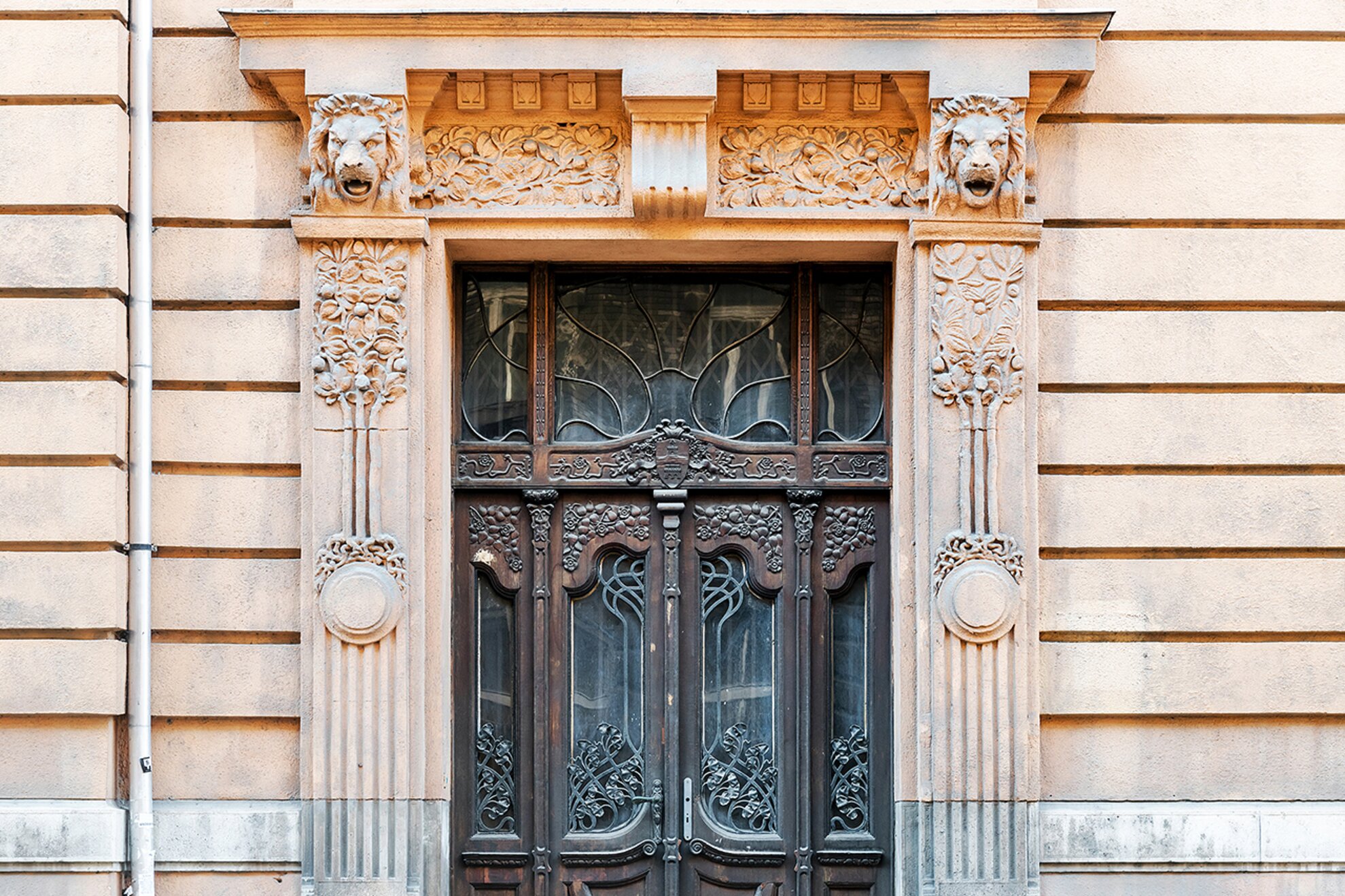
Architects know little about the origin of what serves as the Hungarian National Bureau of Investigation today. Its decorative Art-Nouveau doorway is a secret find among beautiful Budapest portals.
Dob utca 11
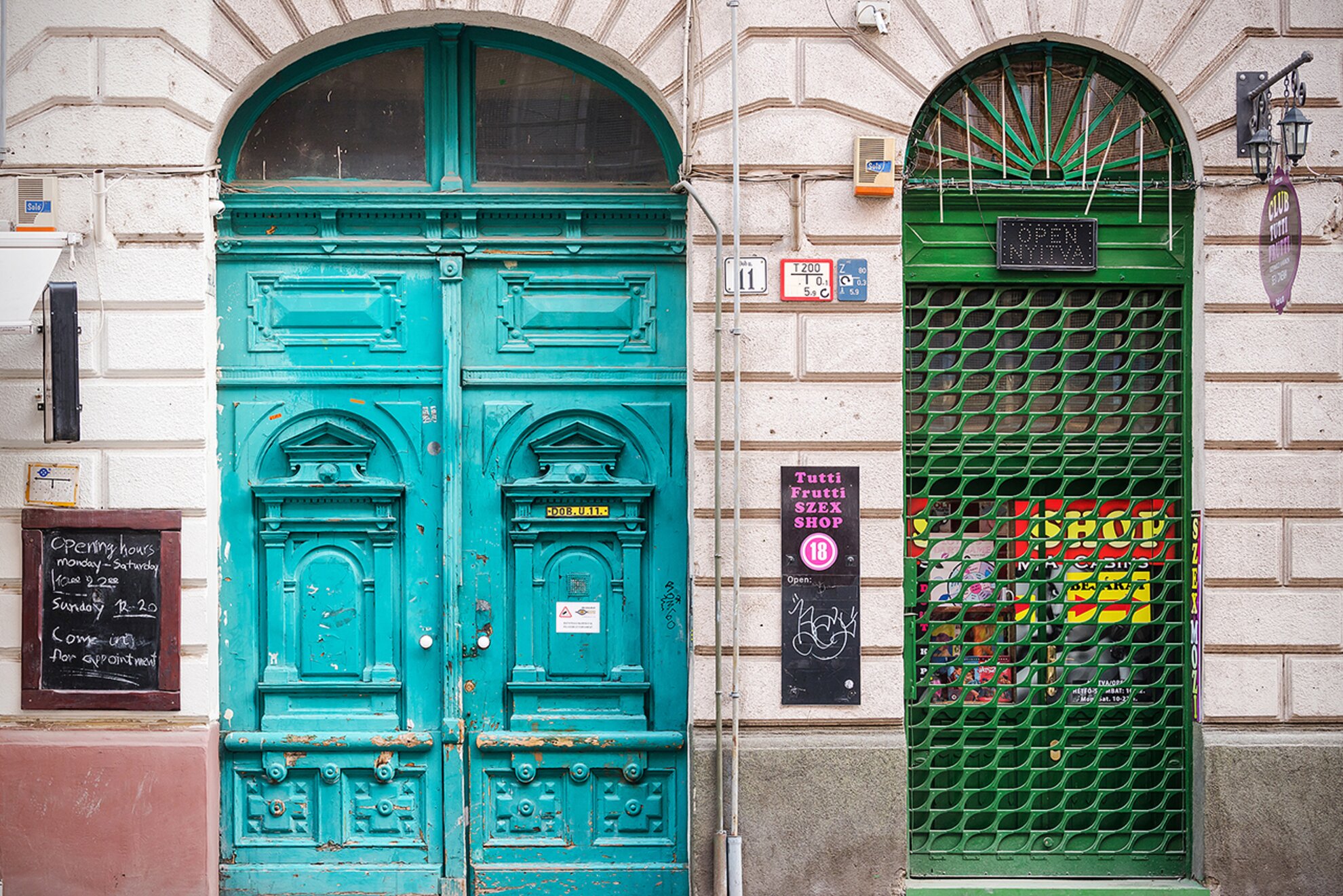
While its turquoise paint has started chipping away, this brightly coloured double-wing door sits deep in Budapest’s party vortex.
Reformist church at Városligeti fasor
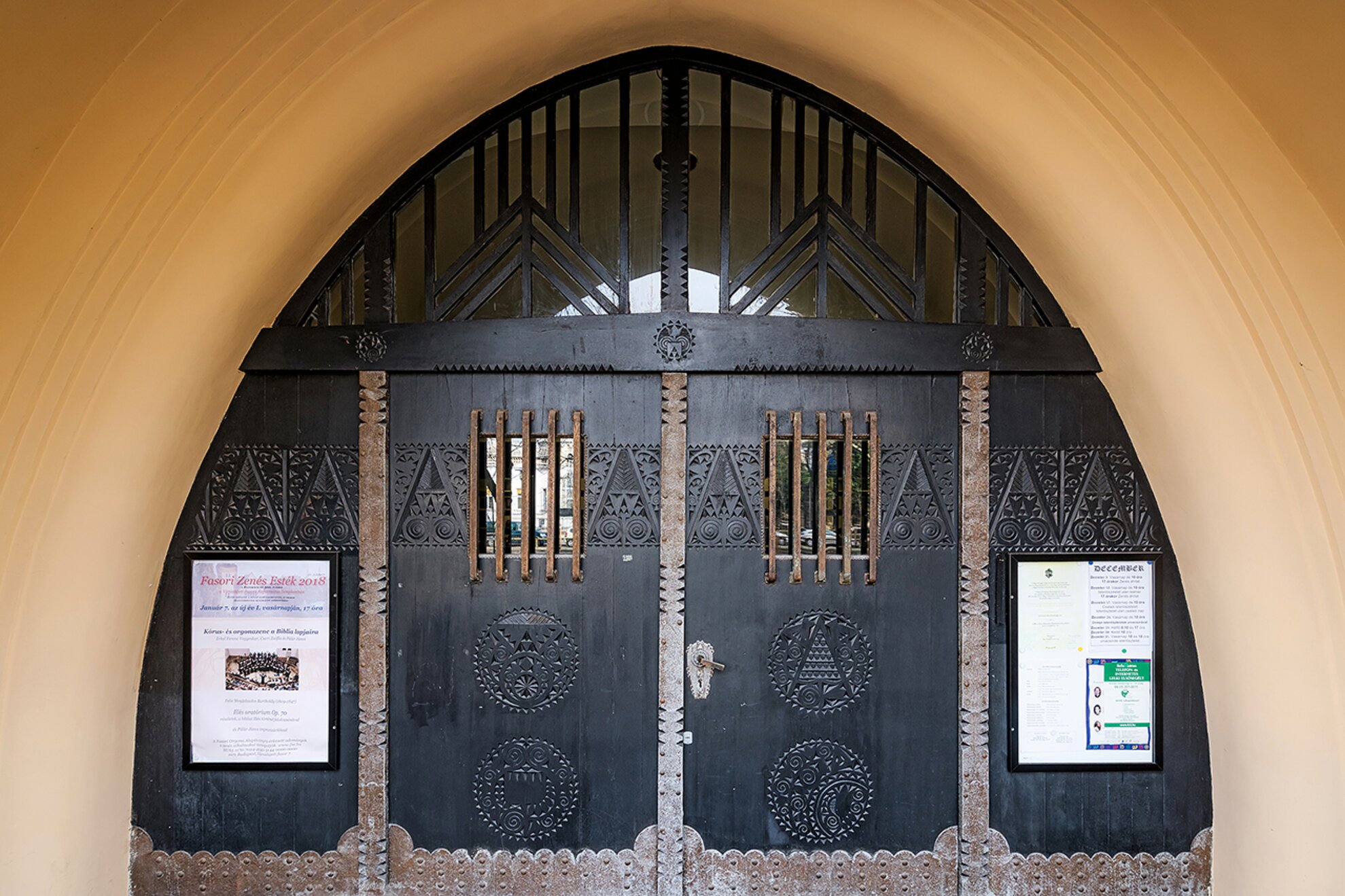
Created by Aladár Árkay, this hallowed site is accessible through an arched metal gate, fusing elements of Art Nouveau, Hungarian folk motifs and even abstract Scandinavian-style solutions in its design.
Fortuna utca 6
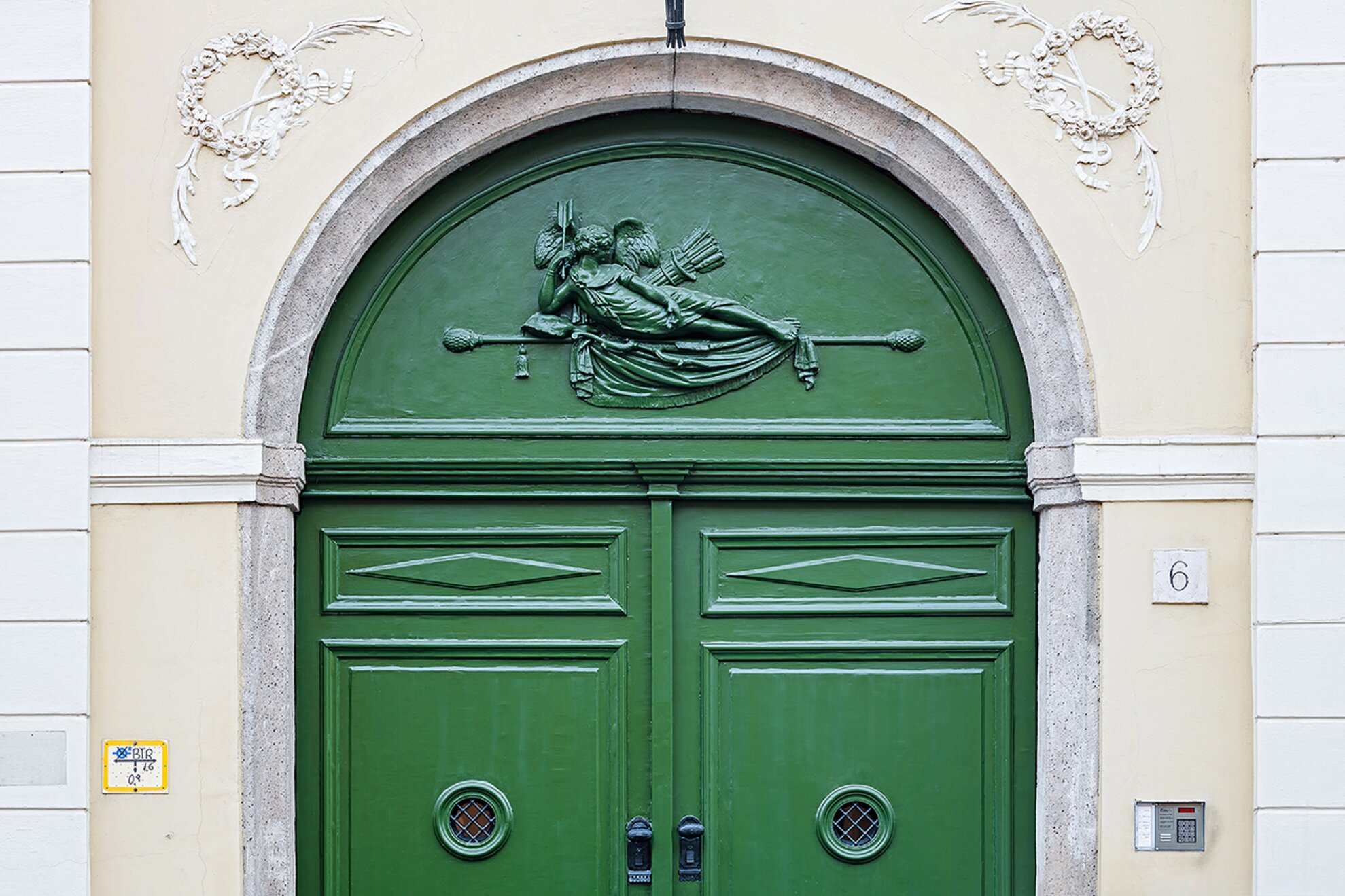
Mounted on a medieval base, this single-storey building in the Castle District stands out with its bright green gate. Atop the double-leaf door, Cupid is carved in wood, holding a bow and arrow.
Hajós utca 25/Napóleon courtyard
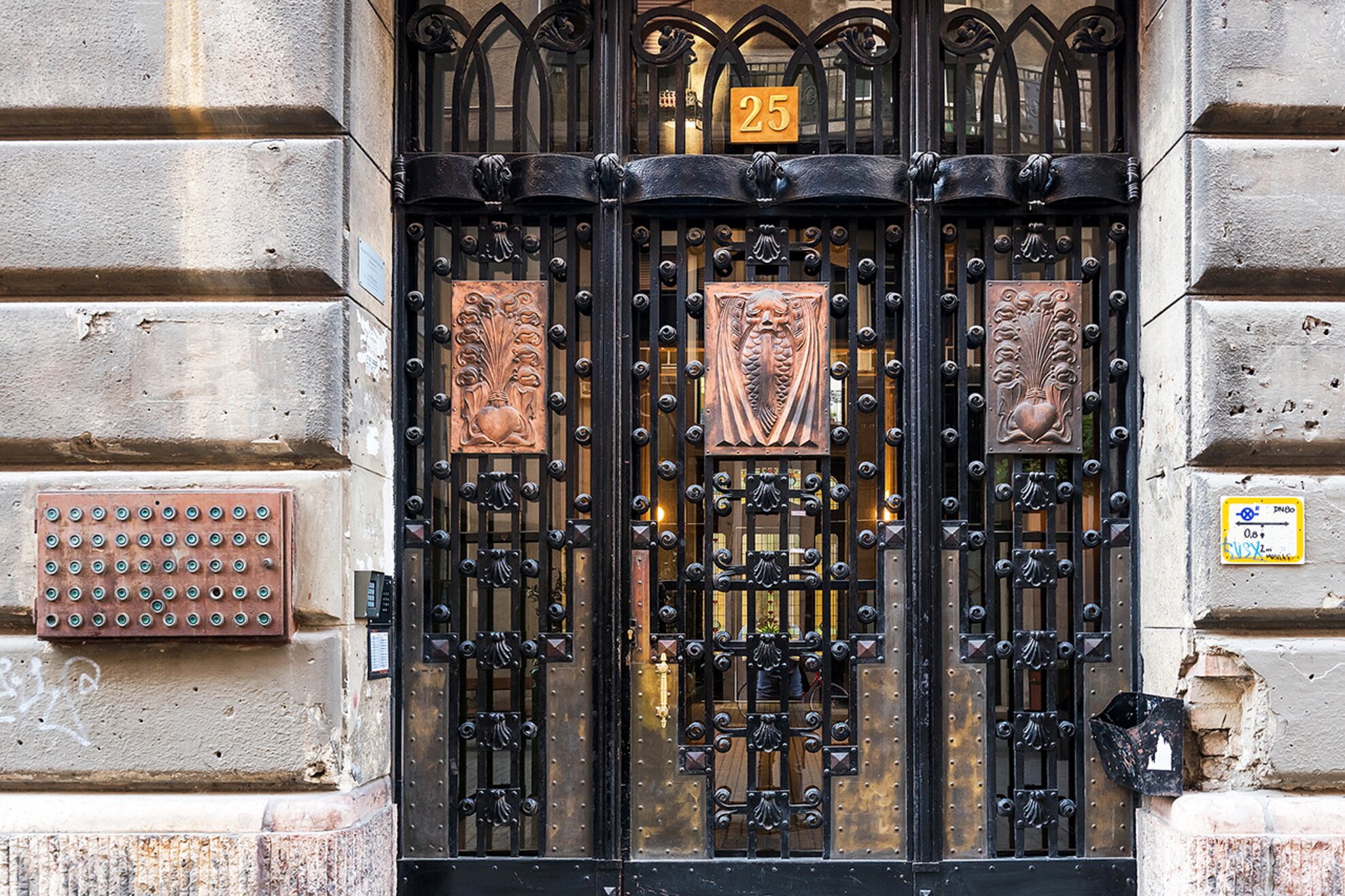
The fin-de-siècle Napóleon courtyard is hidden behind an Art-Deco portal, bearing geometric features of Vienna’s characteristic Art Nouveau. Left of the cast-iron entrance, you can still find the old buzzer board, sadly now rusting away.
Dohány utca 44/Hungária Baths
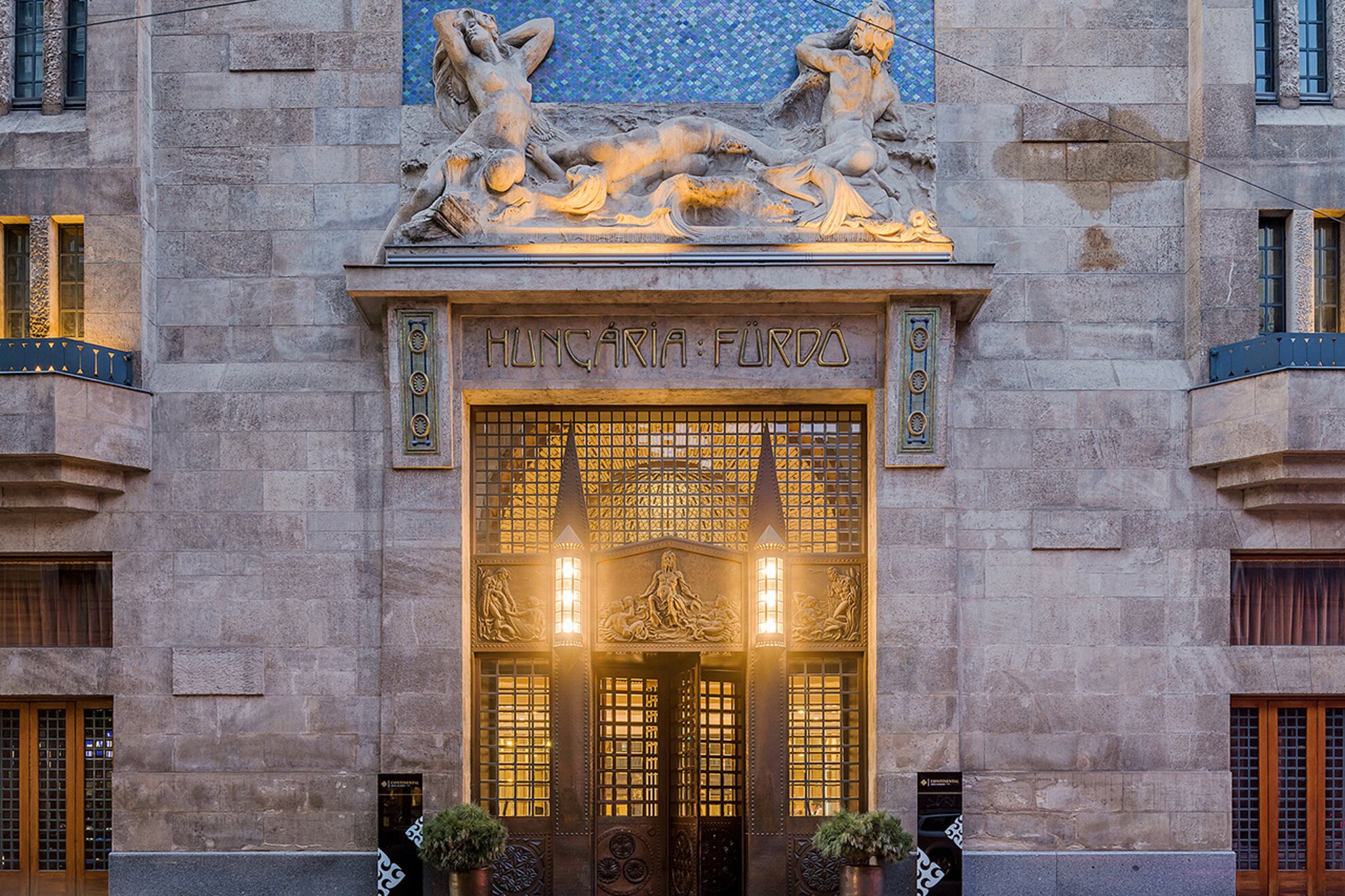
These former baths are now a deluxe hotel at the gateway to Budapest’s party central. Besides touches of Viennese Secession, another remarkable element is the building’s glass portal augmented with copper. Above the gate, the wording ‘Hungária Fürdő’ – referring to the old baths – is fashioned from local Zsolnay tiles. A blue mosaic crowns the decorative design.
Katona József utca 21
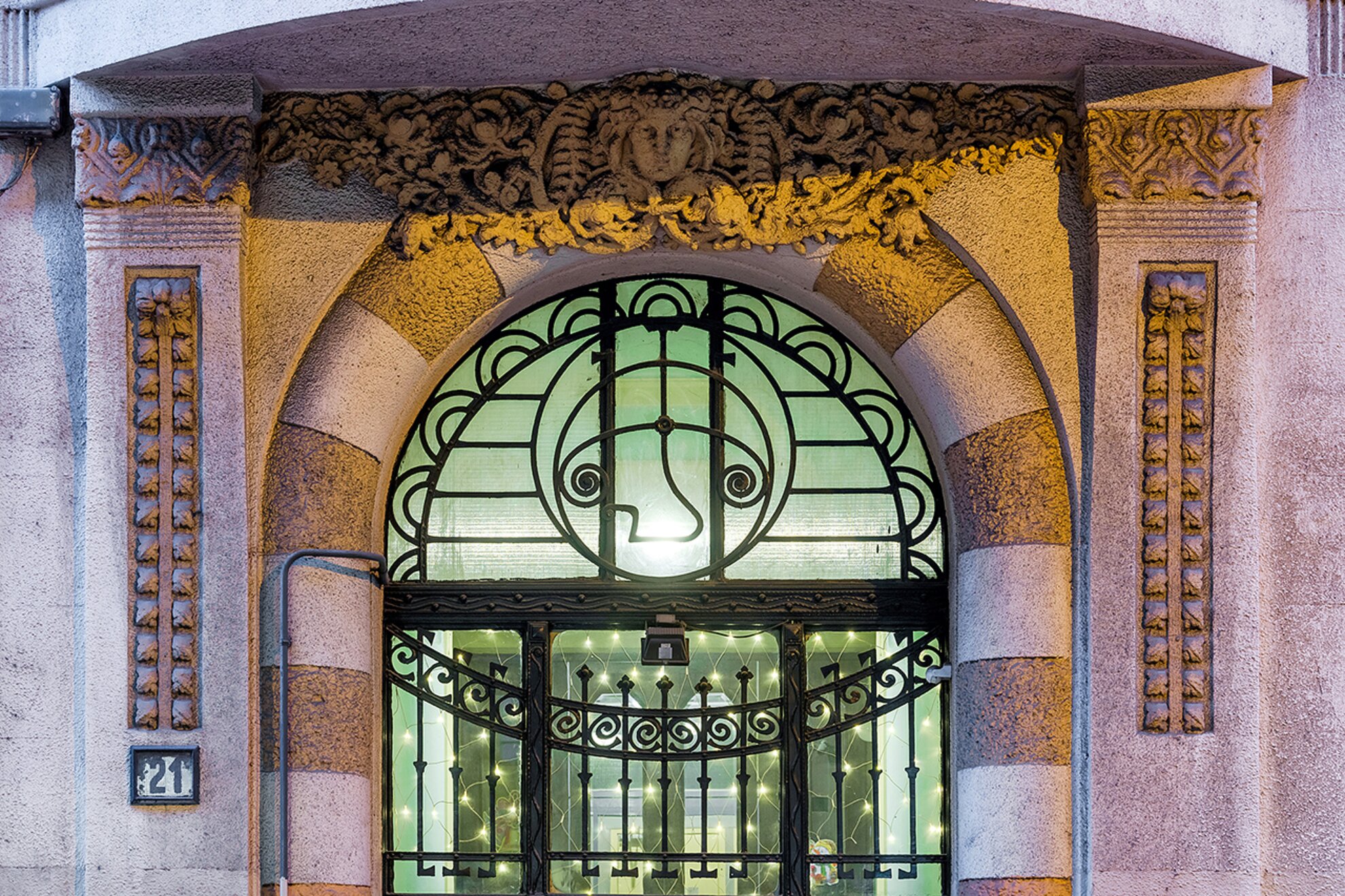
Kossuth tér 4
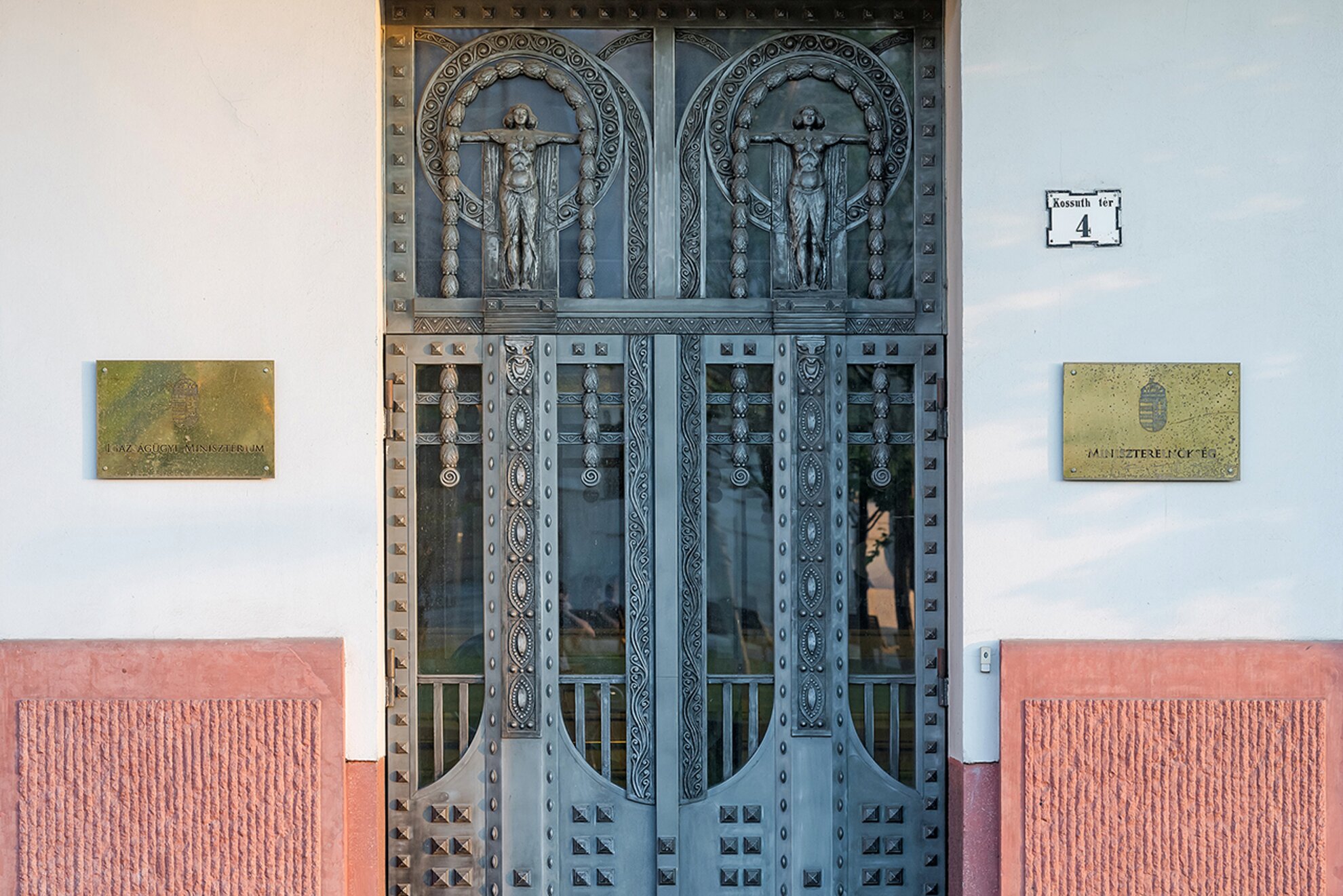
Matthias Church
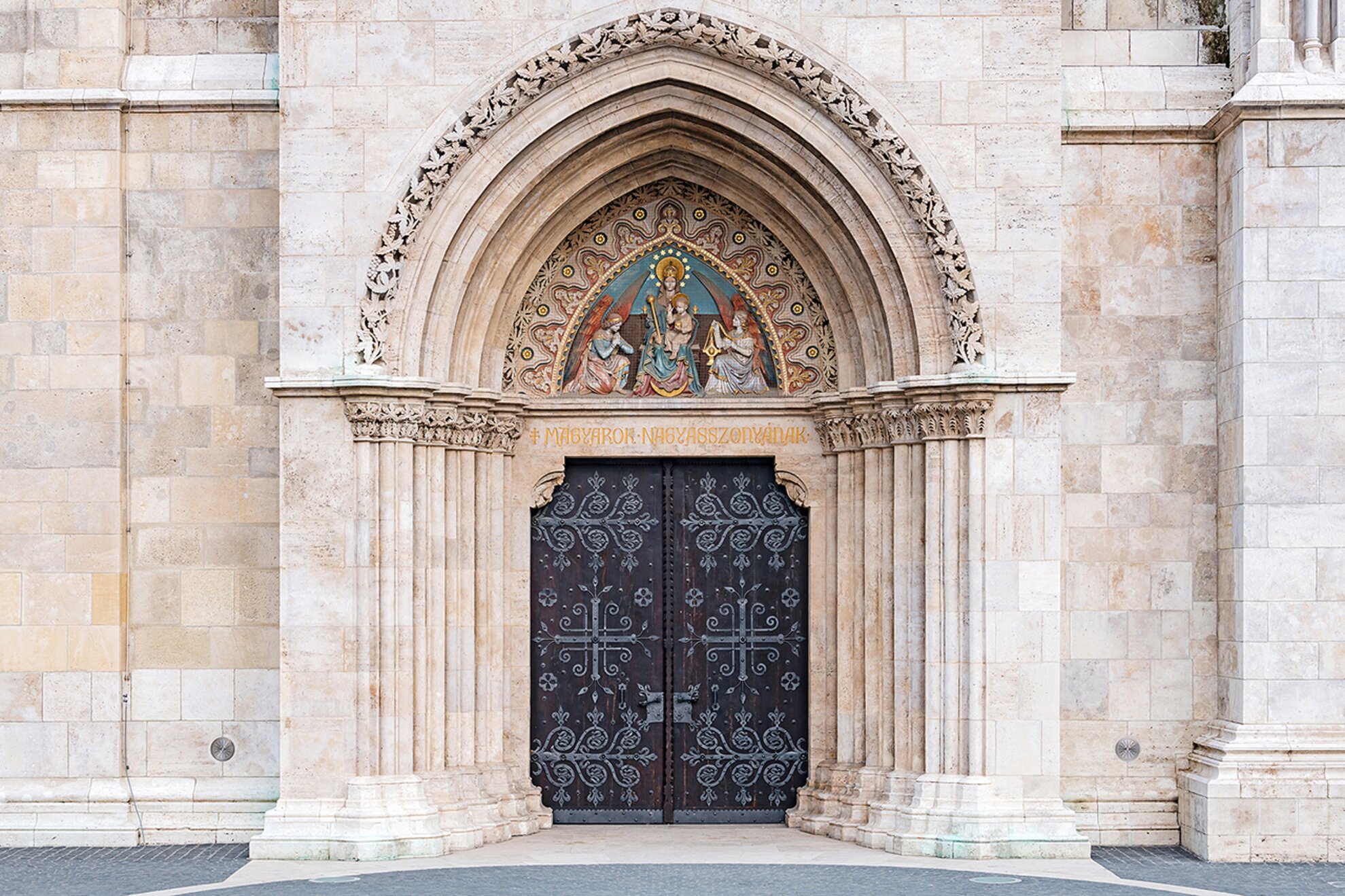
One of the city’s most splendid sights, the neo-Gothic Matthias Church was rebuilt in the 19th century based on the plans by Frigyes Schulek. During 2006-2013, reconstruction work was carried out on the holy shrine, adorned with a multi-layered portal opening in the walls of the church.
Nádor utca 36
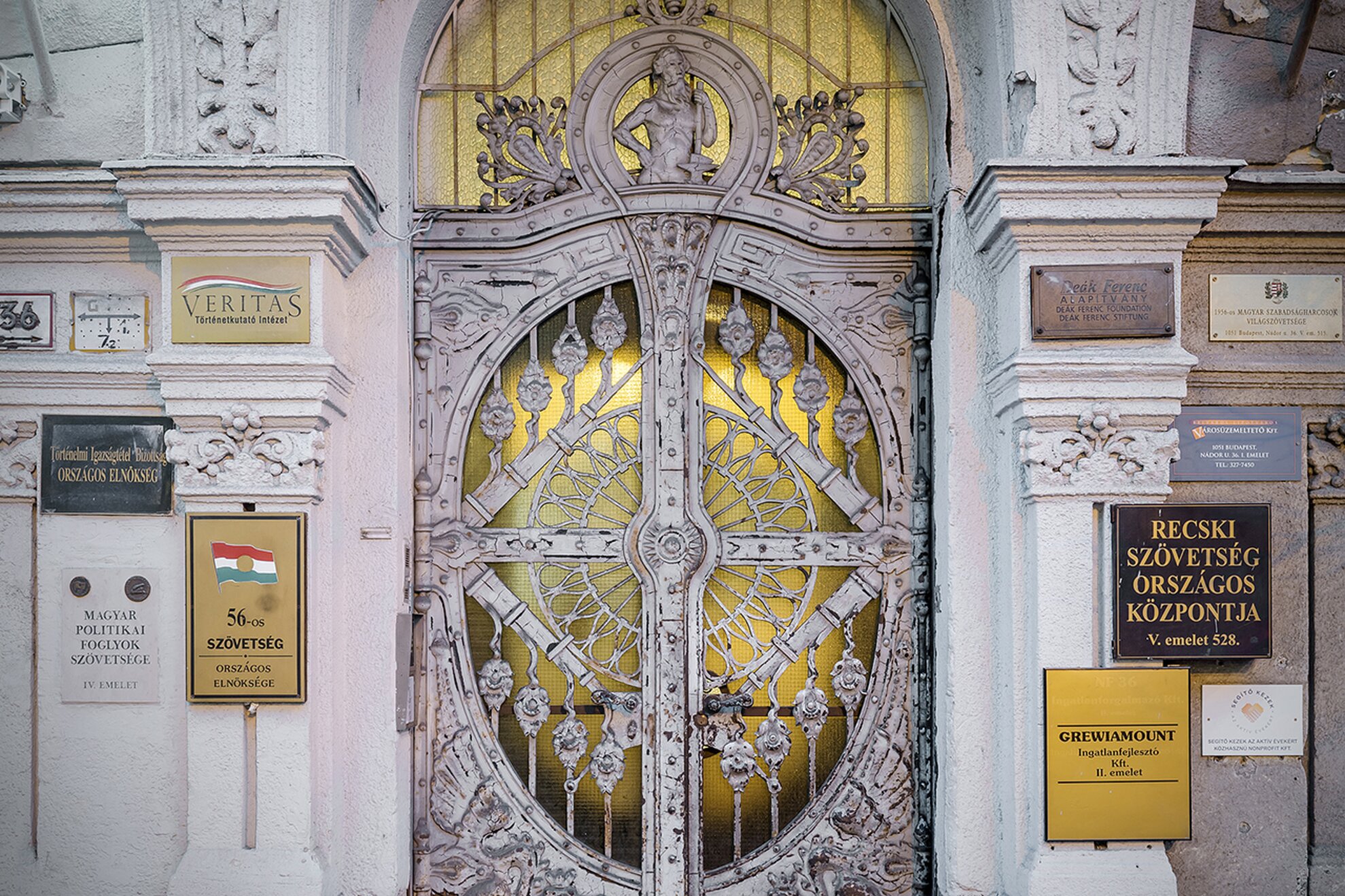
Close to Kossuth tér, an intricately decorated gate features Hephaestus, the ancient Greek god of metallurgy and crafts.
Szondi utca 90
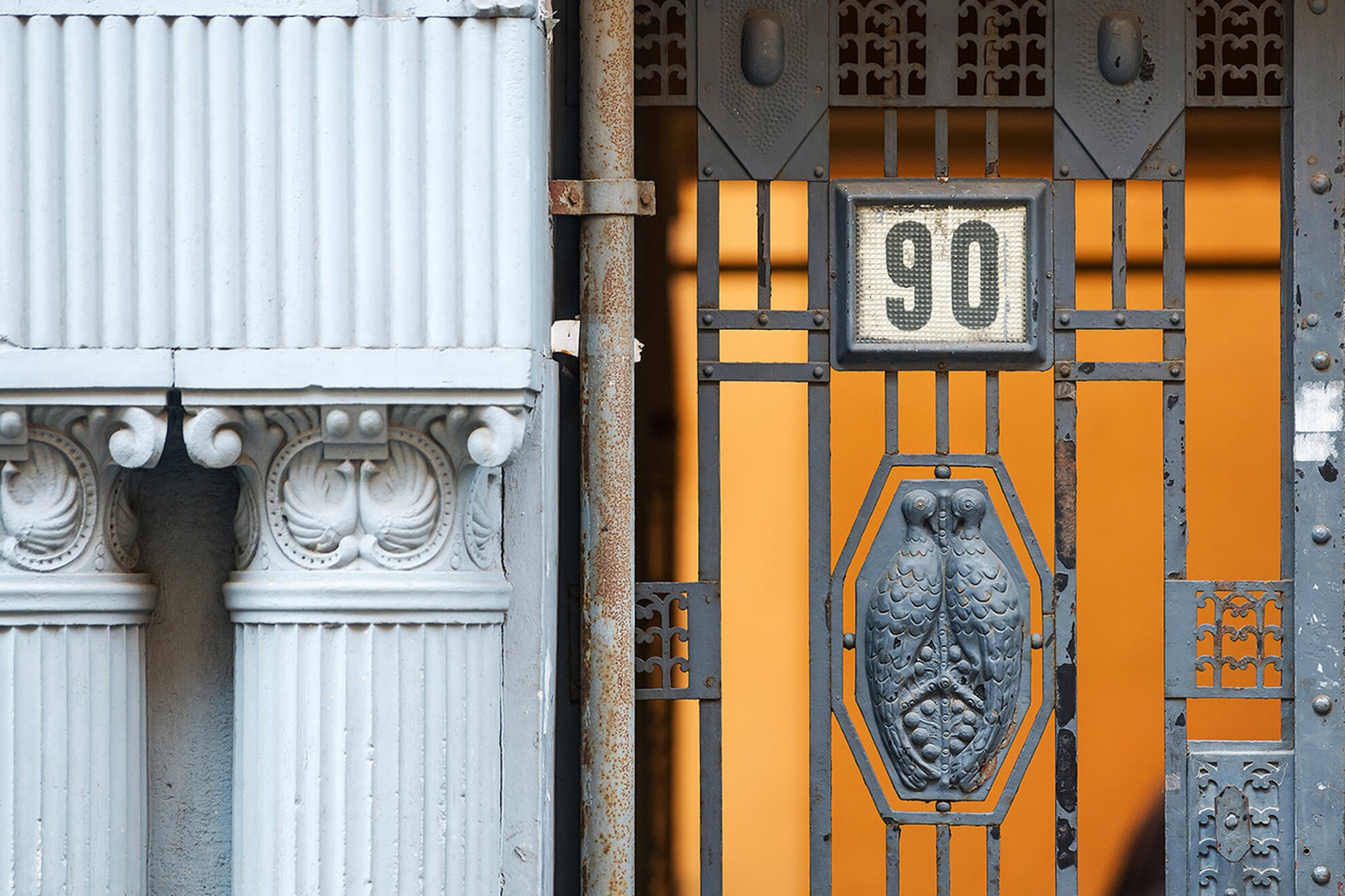
Síp utca 16-18
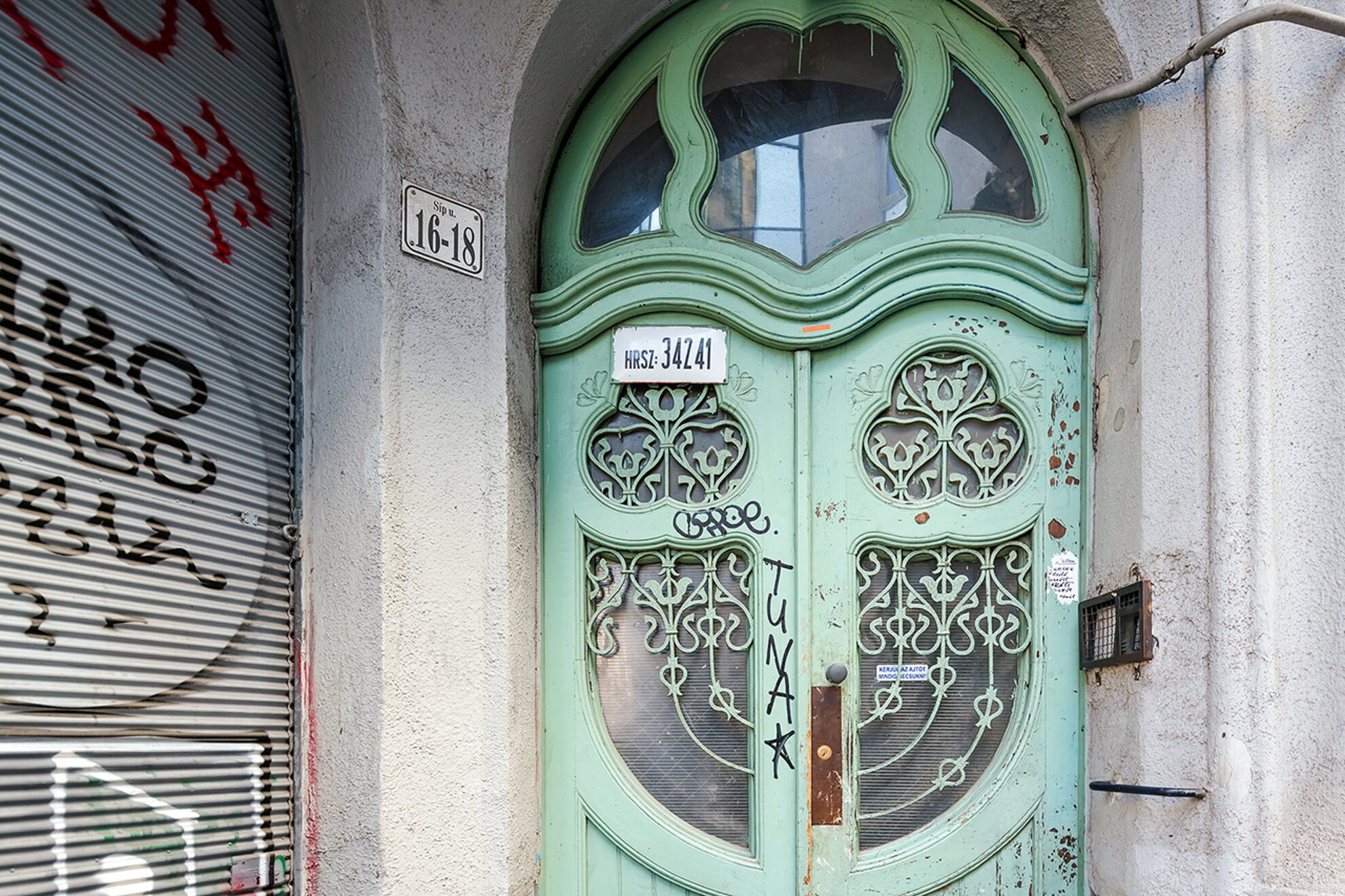
Thököly út 46
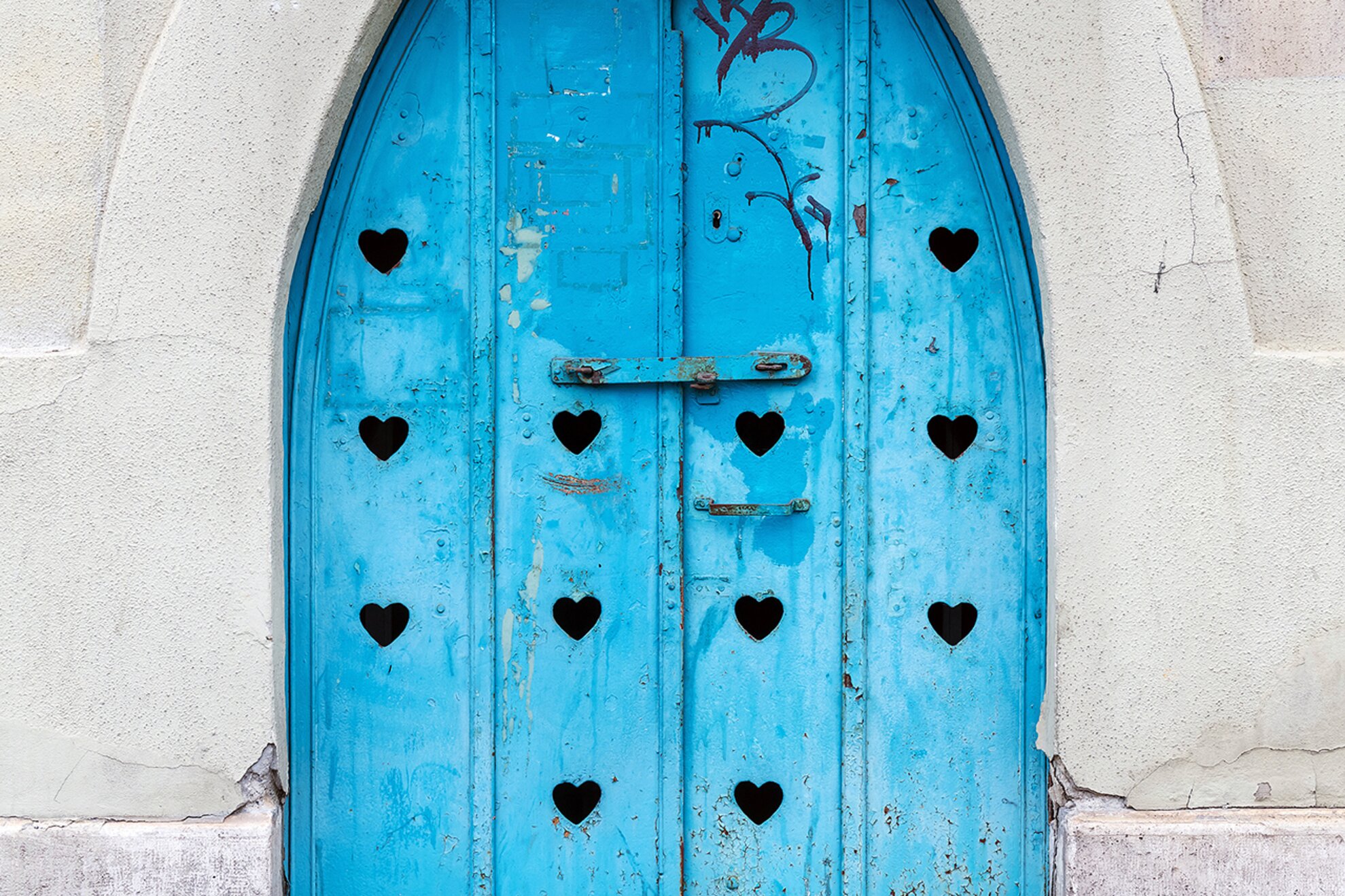
Built in 1906, the Szenes House on Thököly út bears the Ödön Lechner style that embraces landmarks such as the Museum of Applied Arts, and the Geological Institute in District XIV. An evocative element is its blue-coloured cellar door, decorated with 12 love hearts.
Tátra utca 20/B
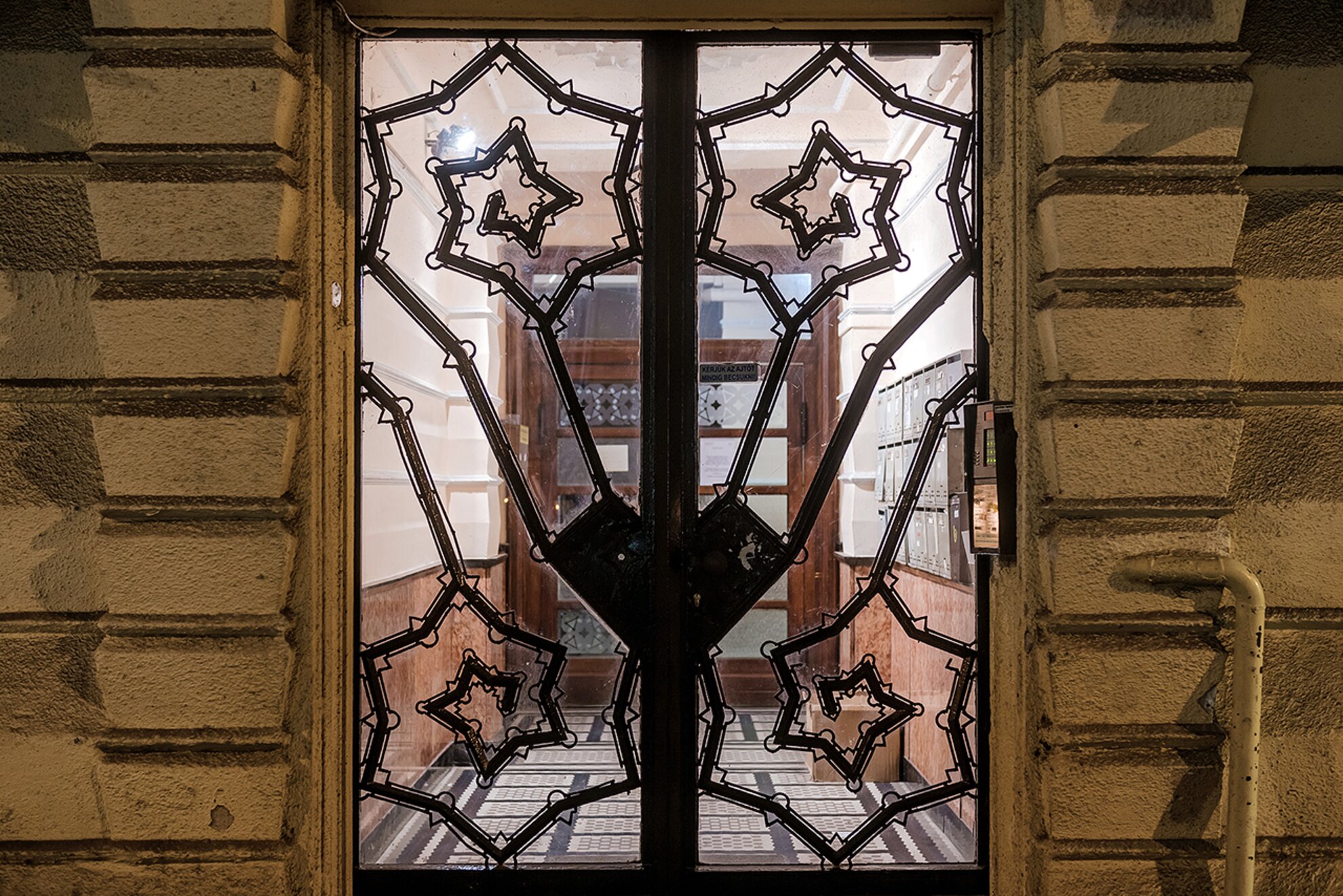
This District XIII building stands out with its Art-Deco style, incorporating star-shaped structures and other geometric forms.
Paulay Ede utca 35/former Parisiana nightclub
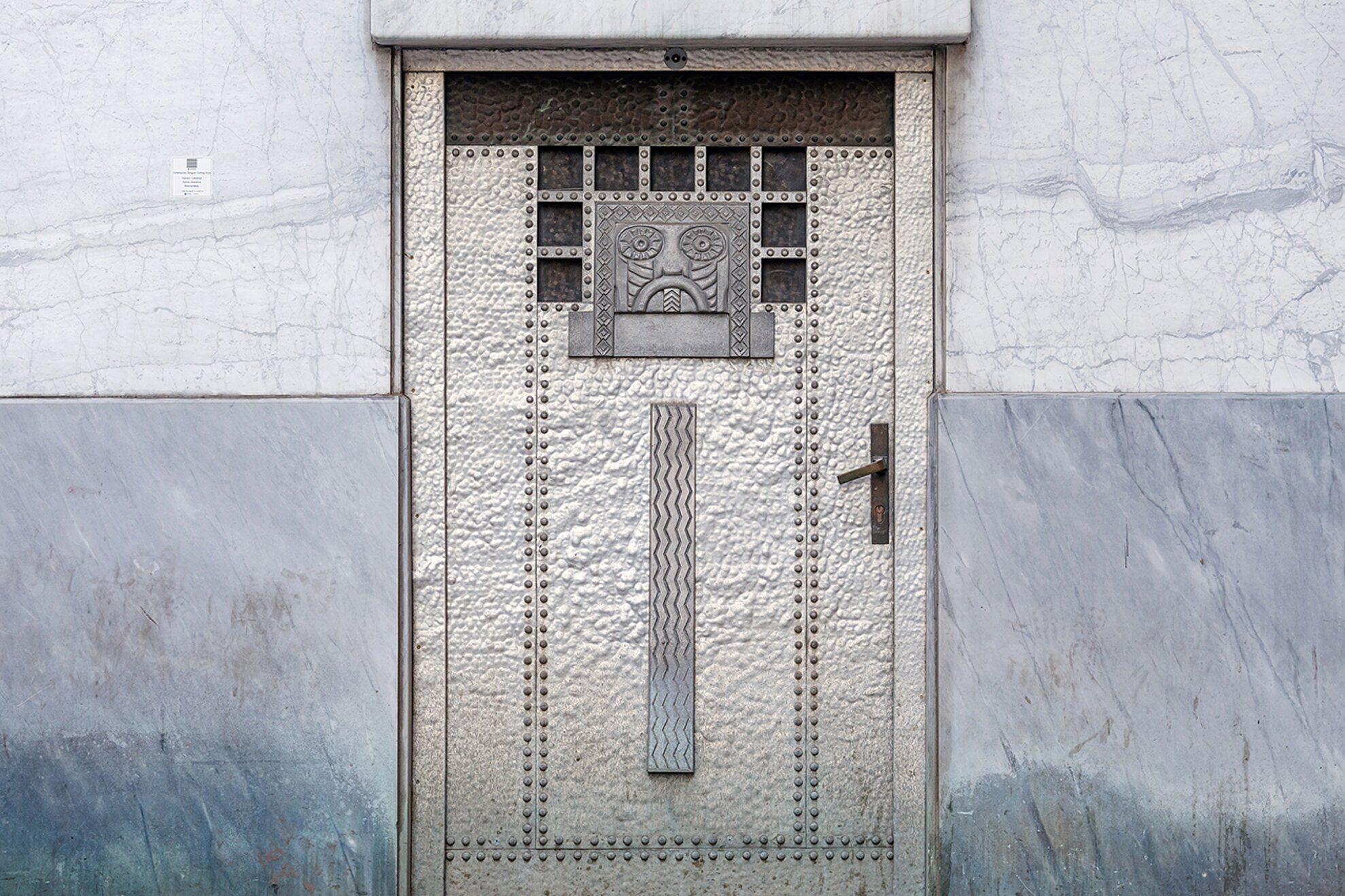
Designed by Béla Lajta in the early 20th century, this former Art-Deco nightclub is now home to the New Theatre. Effortlessly blending in with the white marble façade, the building’s silver-splashed side door features Hungarian folk motifs.
Úri utca 17
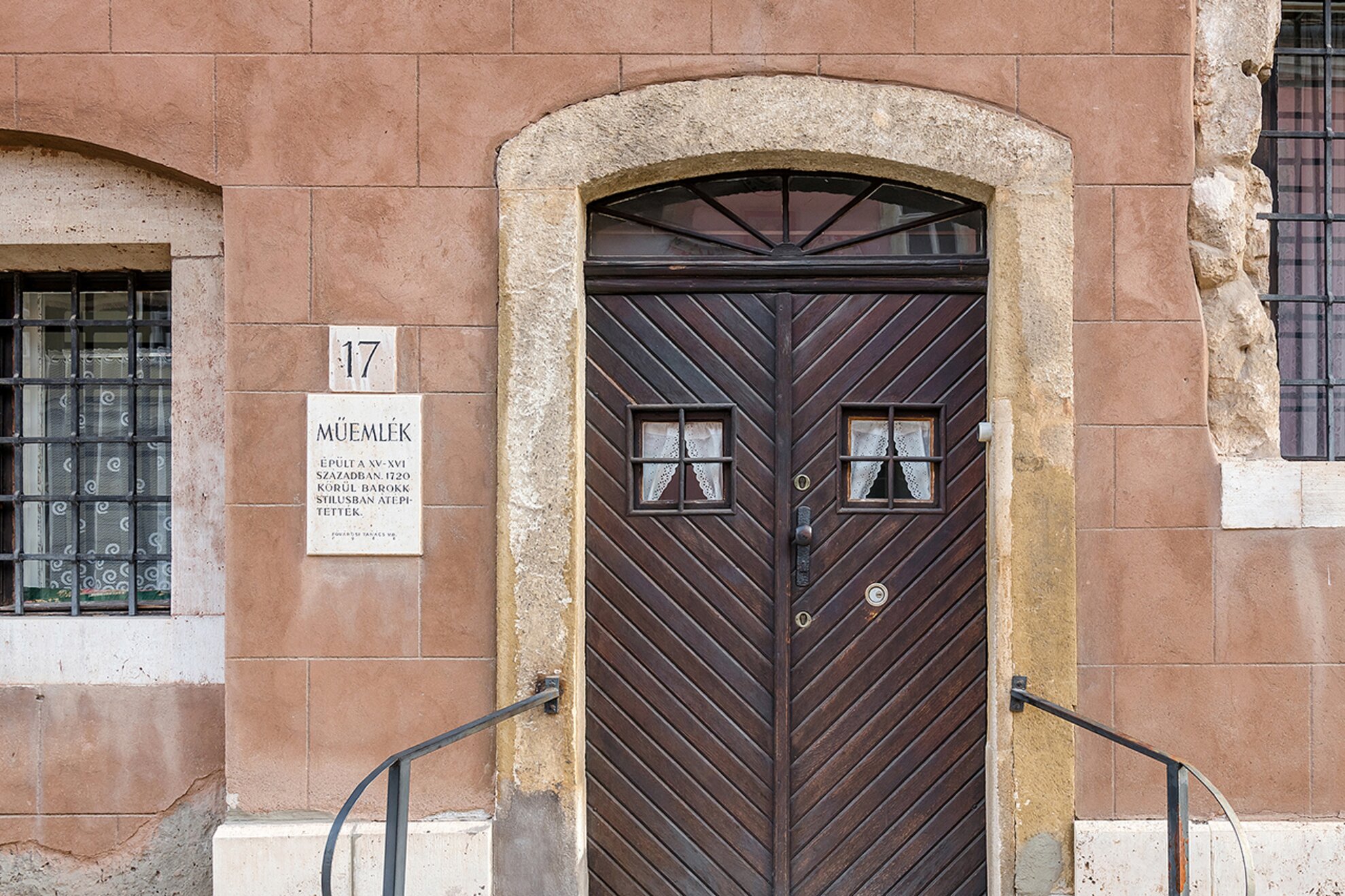
Set in the historic Castle District, this residential building was rebuilt in Baroque style around 1720. Its unpretentious wooden door entices passers-by to peak through its two little windows, decorated with tiny white curtains.
Üllői út 14/Aranysas courtyard
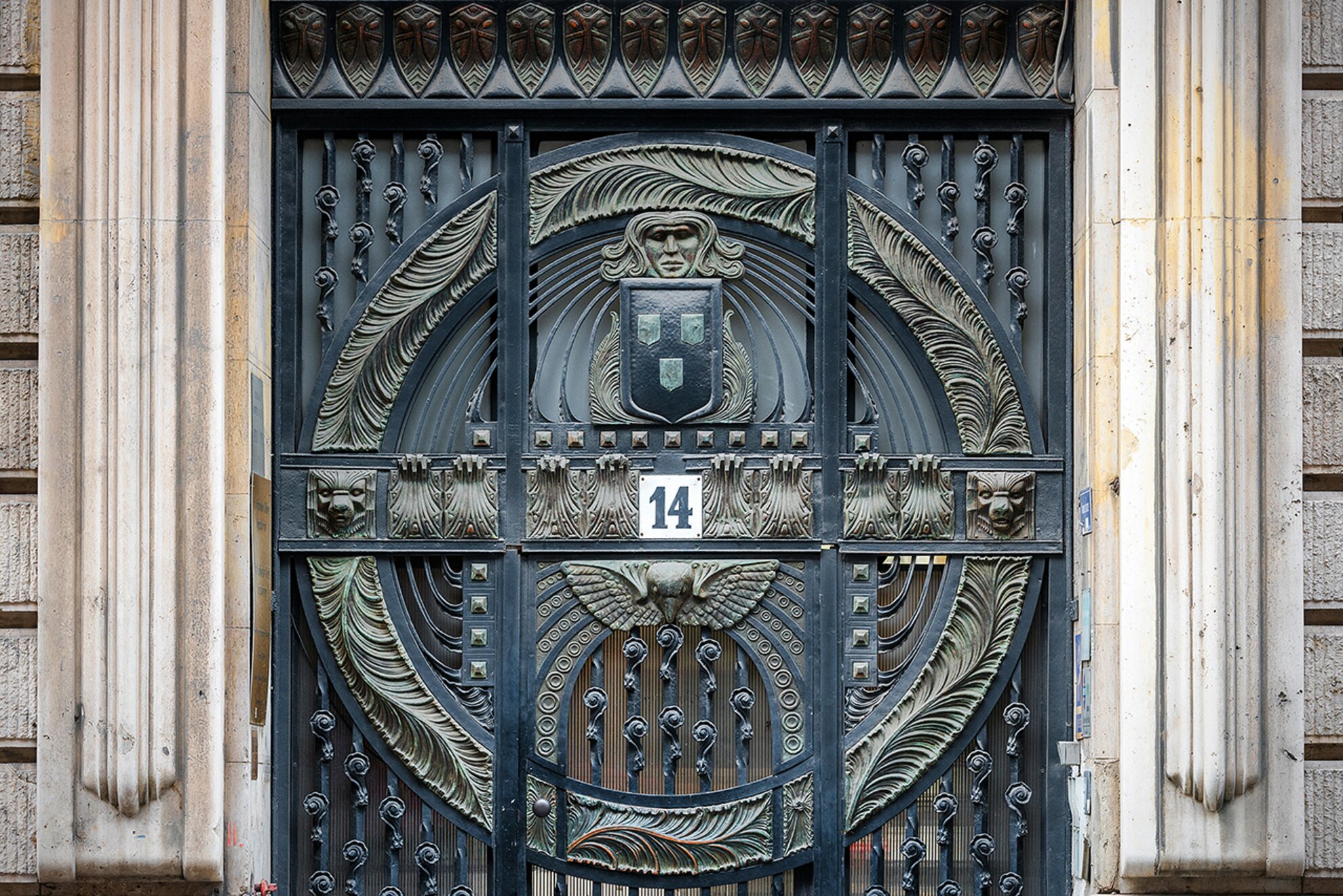
A real masterpiece by the Győry and Gerő blacksmith firm, this massive Art-Deco iron gate opens up a whole new universe with its animalistic adornment, including a head of two lions and an eagle.
+1 Zöld Teknős tea house
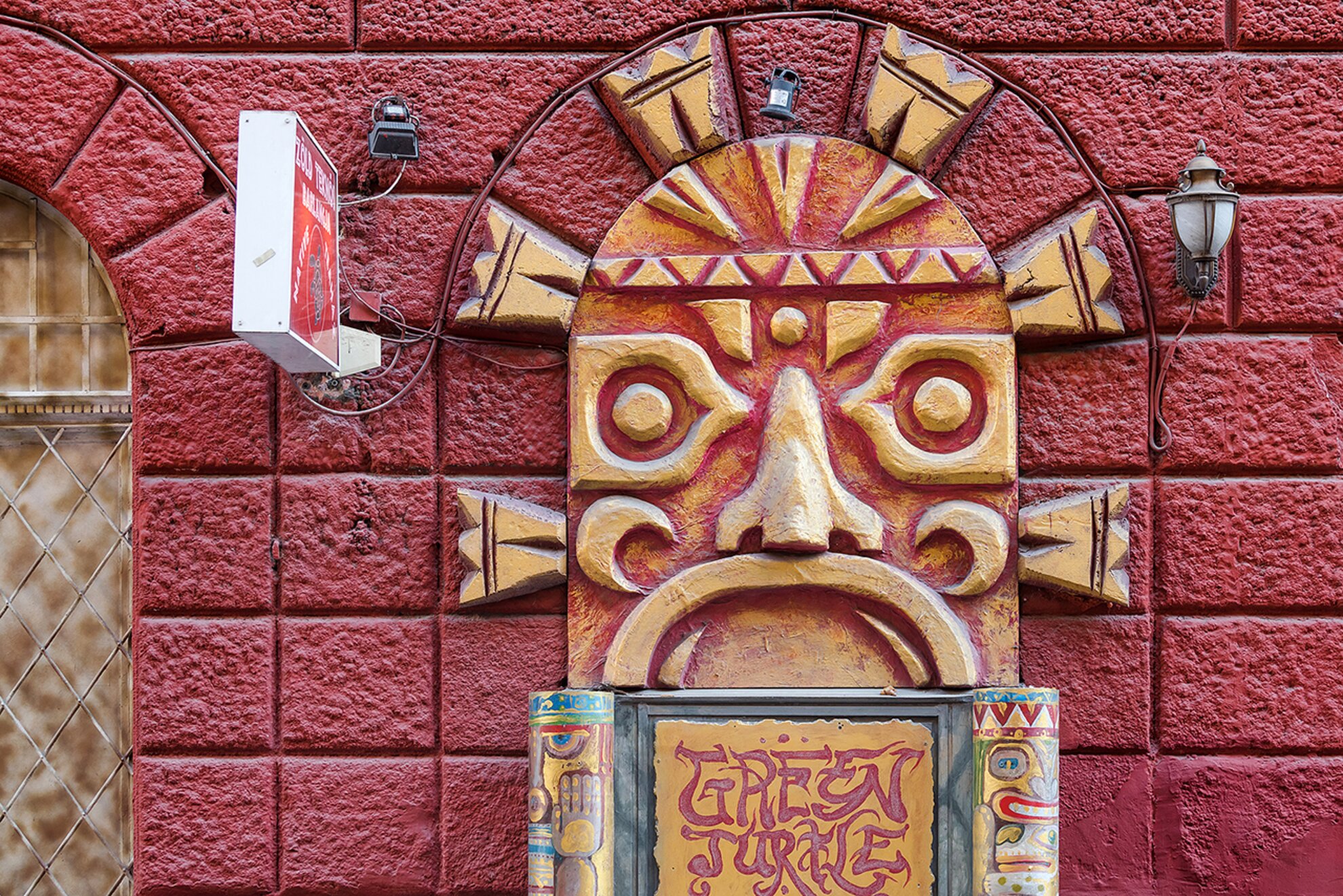
With its South-American influences, the Green Turtle Cave tea house bears a design distinctive from Budapest’s fin-de-siècle architecture.
